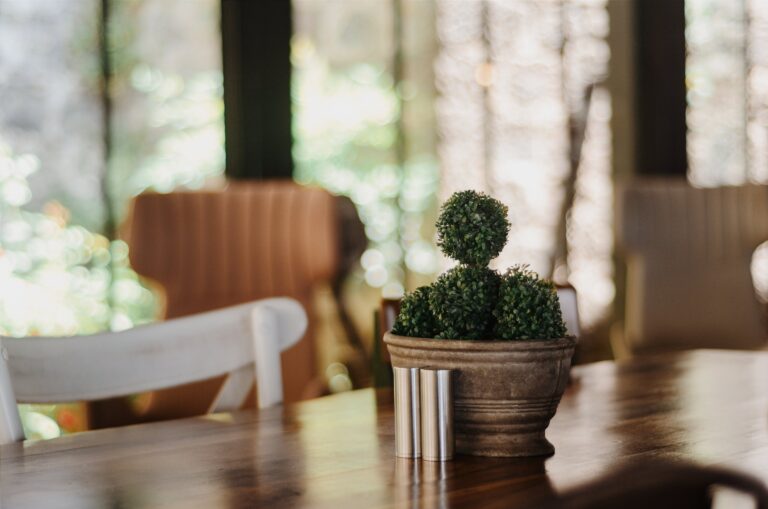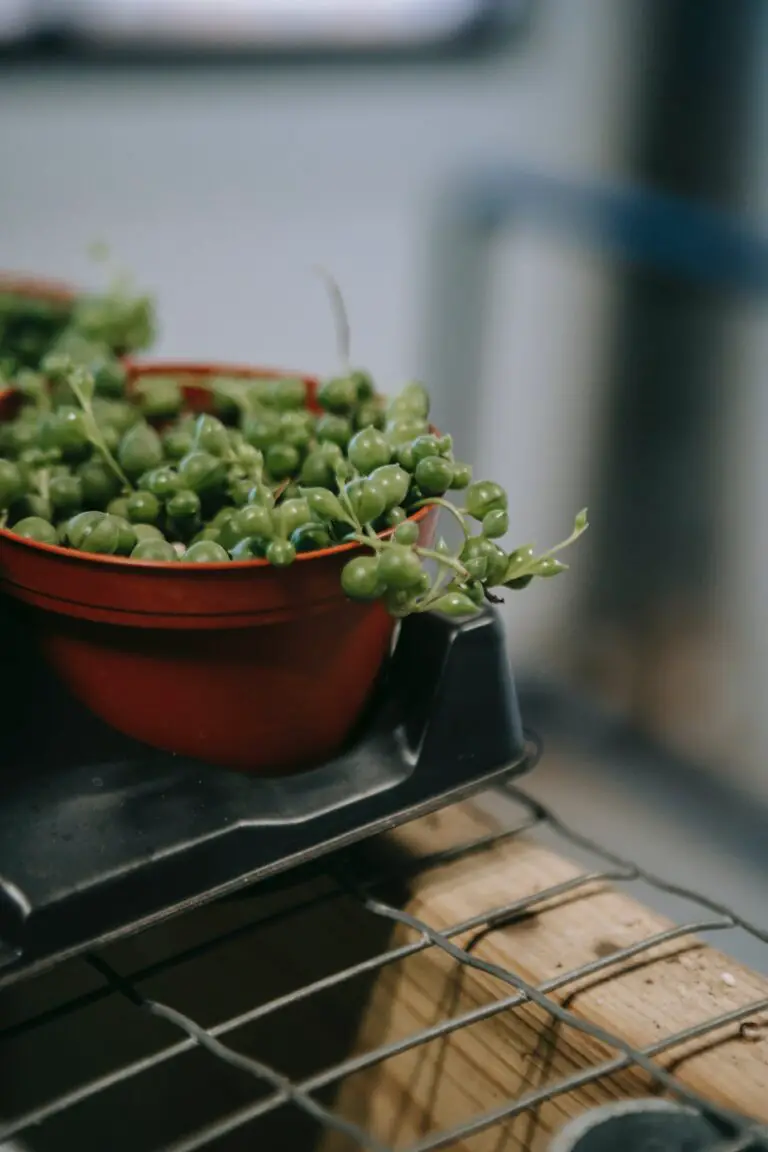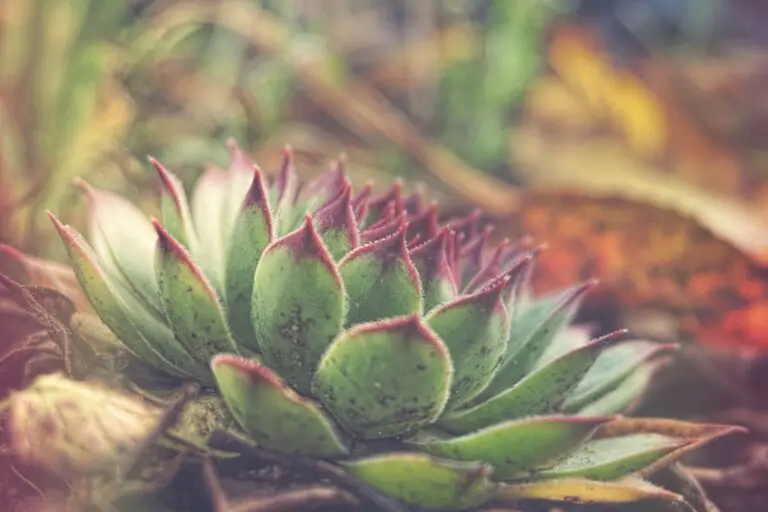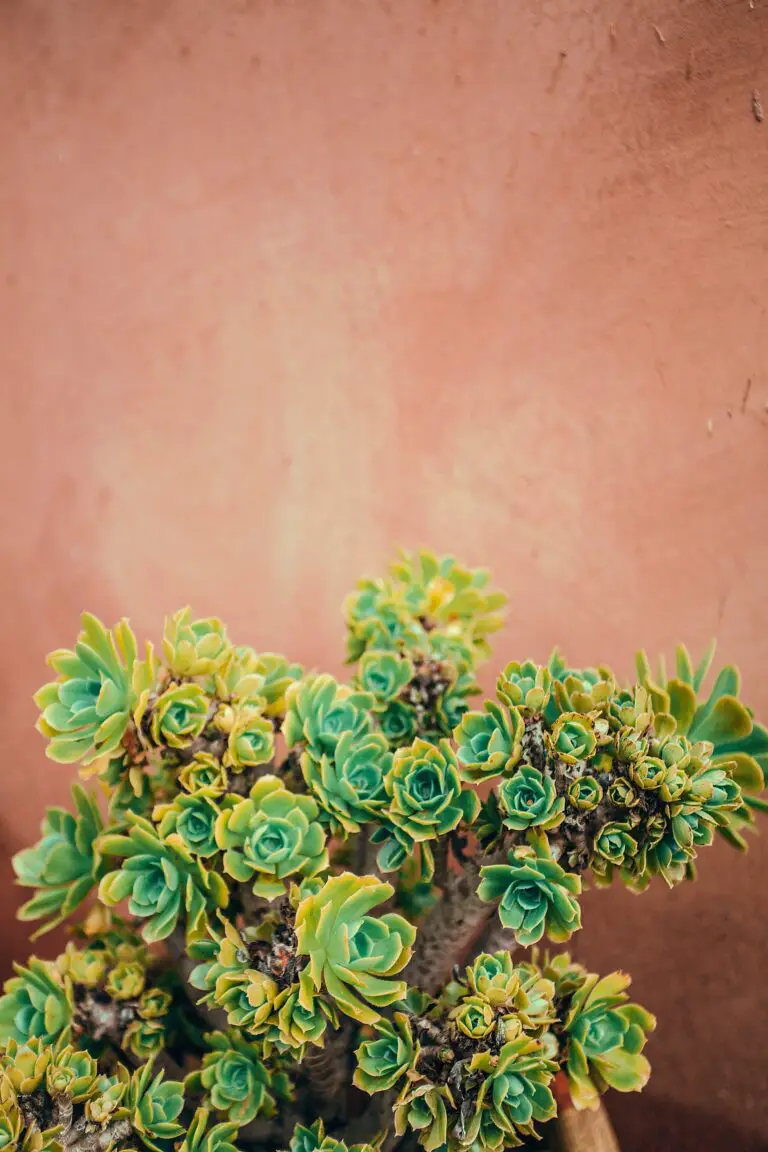The Mystery of Succulent Leaf Propagation
Have you ever marveled at the tenacity of succulents, those robust and diverse little wonders that grace our homes and gardens? There’s something almost magical about their ability to thrive in harsh conditions, and one of their most fascinating features is their ability to propagate from just a single leaf. This remarkable ability has made propagating succulents from leaves a favorite pastime among gardening enthusiasts. It strikes a chord with those who relish the notion of new life springing forth from the smallest of fragments.
Imagine plucking a leaf from your cherished succulent, laying it atop soil, and witnessing a miniature version of the plant slowly unfurling from its tip. This isn’t a fantasy; it’s the everyday miracle performed by countless home gardeners. Experts in the succulent domain advise that patience is the gardener’s best friend when it comes to leaf propagation. Giving the detached leaf time to callous over before nestling it atop the soil can lead to successful sprouting. For those eager to delve deeper into this subject, a thorough step-by-step guide on succulent propagation can set you on the right path.
But let’s be clear, while the concept might sound straightforward, propagating the succulent leaf requires some know-how. If you’re wondering about the common pitfalls to avoid or just curious to see this process in action, I’ve got a treat for you. Take a look at this instructional video that breaks down the essentials of successful succulent leaf propagation.
Lest you think the journey ends once your leaf has rooted, think again. That’s merely the first chapter. The true joy lies in the day-to-day observation, as tiny roots reach out like delicate threads and baby succulents begin their growth spurt. Each leaf tells a new story, sometimes sprouting multiple plantlets, demonstrating nature’s generous spirit and inexhaustible potential for regeneration.
So, can a succulent sprout new life from just a leaf? Absolutely! This slice of plant alchemy is not just about bringing new succulents into the world; it’s also a lesson in resilience and the continuous cycle of life. A solitary leaf can ignite a fresh start, embodying hope and the perseverance of nature. Now, if only we could imbibe such an enthusiastic response to life’s challenges!
The Right Conditions for New Growth
Imagine a single succulent leaf, fallen to the ground. It seems like the end of its journey, but with the right conditions, this tiny traveler could sprout into a vibrant, full-grown plant. The secret to a leaf’s successful journey to becoming a flourishing succulent lies in environmental factors such as light, temperature, and humidity. So, what does it really take for a lonely leaf to start anew?
Firstly, light is the beacon that guides the growth of succulents. Adequate sunlight is crucial, but too much direct exposure can be just as harmful as too little. Imagine a beach vacation: a balance of sunny adventures and cool shade is essential. Similarly, succulents desire indirect light or shaded sun to bask in without getting sunburned. It’s like Goldilocks finding the conditions that are just right.
When it comes to temperature, succulents prefer the warmth of a cozy blanket on a brisk morning rather than a mid-summer noon in the desert. Temperatures that are too hot can cause stress, while too cold can be downright unforgiving. The ideal range? A comfortable 60-80°F (15-27°C), where a leaf can happily thrive without breaking a sweat or catching a chill.
Humidity is the invisible embrace that can influence a succulent’s success. Too much moisture in the air and the leaf might find itself sweating uncomfortably; too little, and it may thirst for a drop of dew. A moderate humidity level is like a refreshing morning mist, providing enough water in the air without turning it into a rainforest.
With these factors harmonizing together, a leaf can confidently take root. And once it does, new life unfolds. Proper succulent care transforms an abandoned leaf into a symbol of resilience. Each new sprout is evidence of life’s remarkable ability to endure and adapt. Take a peak into a succulent’s journey from a seemingly lifeless leaf to a burgeoning beauty and be inspired by the resilience and adaptability that nature bestows upon these little wonders.

Step-by-Step Guide to Propagating Succulents
Propagating succulents from a leaf is a fascinating process that embodies the resilience and adaptability of these plump, water-storing wonders. Essentially, it’s the art of creating new life from a single piece of an existing plant. Picture this: a discarded leaf from your beloved succulent, lying on soil, begins to conjure up its own mini universe—a tiny but tough sprout that holds the promise of growing into a full-fledged succulent. This is nature’s version of a phoenix rising from the ashes, and it’s something you can witness right on your windowsill!
First things first, choose a healthy leaf from a mature succulent. Gently wiggle it from side to side until it comes away with a clean snap—no jagged edges, please! This is crucial since a torn leaf may not have all the cells it needs to spark new growth. Once you’ve secured your leaf, lay it on top of well-draining soil, reminiscent of the perfect succulent soil mix that you’ve read about.
Patience is your best friend during this stage. It takes time for the leaf to conjure up roots and a rosette—often weeks or even months. Ensure it gets plenty of indirect sunlight, and resist the urge to water too frequently. You’re not making soup; these succulent babies like it on the dryer side. A soft spritz of water when the soil is dry to the touch should be enough. This delicate dance of conditions will ultimately coax out delicate pink roots, seeking the nurturing embrace of the soil.
And as for the proper technique? Remember, it’s a marathon, not a sprint. Overwatering is the nemesis of succulent propagation—it’s like offering a camel a lake when it’s just asking for a water bottle. When you see those roots and the formation of a tiny succulent plant at the base of the leaf—a sight that warrants a celebratory dance—it’s time to transfer it to its own pot of soil to continue thriving.
If you’ve followed the steps correctly, what awaits is a charming new succulent ready to grow and flourish in your collection. Don’t be disheartened if some leaves don’t take; even the best gardeners face plant casualties. The key is to learn, adapt, and try again. Soon, you’ll master the craft and witness a leaf’s journey to becoming a succulent with its own character and charm.
So, channel the endurance of succulents and embark on your propagation journey. It’s a heartwarming process that teaches us the beauty of growth, resilience, and life’s ever-present potential for renewal. Are you ready to give it a try?
Choosing the Best Succulents for Leaf Propagation
Embarking on the journey of succulent propagation can be as exhilarating as it is rewarding—especially when starting from a simple leaf. Some succulents stand out as exceptional candidates for this form of renaissance, boasting higher success rates and the promise of vigorous growth. Let’s dive into the world of leaf propagation, exploring those species that are best suited for this miraculous transformation.
Imagine a tapestry of succulents that starts with a single leaf. The Echeveria genus, with its rosette beauty and plump leaves, is often the poster child for this method. Varieties such as Echeveria ‘Lola’ and Echeveria ‘Perle von Nürnberg’ not only root quickly but also develop into full-sized plants at an impressive rate, making them perfect for beginners and enthusiasts alike.
Then there’s the ever-popular Jade Plant (Crassula ovata), renowned for its resilience and forgiving nature. A fallen leaf from this stoic greenery, when settled atop a welcoming bed of soil, rarely disappoints, sprouting roots with the minimal fuss. The whimsical Sedum morganianum, or ‘Burro’s Tail’, is another star in the propagation arena, with leaves that need only the slightest encouragement to embark on a quest for growth.
Amid these propagation champions, we find the Graptopetalum paraguayense, or ‘Ghost Plant’, whose spectral, opalescent leaves seem to possess their own magic. Left to rest on soil, they can quickly give rise to clusters of new plants. For those hoping for a bit of drama, the deep burgundy tones of Aeonium ‘Zwartkop’ leaves are equally adept at striking root—often surprising their caregivers with their tenacity.

When it comes to succulents, their ability to regenerate is nothing short of awe-inspiring. Selecting the best species for propagation is not just about success rates; it’s about witnessing the sheer wonder of life as it unfolds from the tiniest beginnings. So, whether you’re a seasoned horticulturist or newly green-thumbed, these succulent species offer a delightful glimpse into the world of plant potentiality—where every leaf is a promise of new growth.
Troubleshooting: Common Issues and Solutions
Embarking on the journey of succulent leaf propagation can be thrilling, but sometimes, our little green charges throw us a curveball. Let’s navigate these common stumbling blocks together!
Battling Rot: What’s Going On Below?
So, you’ve noticed your precious leaf beginning to turn mushy at its base – it’s the dreaded rot! Before you toss it to the compost gods, consider this: rot can often result from overenthusiastic watering or poor drainage. Scale back on the H2O and ensure your propagation station has ample drainage to prevent stagnation. It’s like making sure your succulent’s feet aren’t constantly wet!
Not Drying Out, Are We?
Your leaf should callous over, creating a protective barrier that segues to roots. If the entire leaf dries out, it might be waving the white flag. This could be due to too much direct sunlight or not enough ambient moisture. Imagine wearing a sweater in the desert – it’s all about the right conditions. Creating a humid microclimate or shifting your leaf out of the harsh sun might just be the ticket.
Roots, Where Art Thou?
Witnessing roots sprout from a leaf can evoke the same awe as watching a butterfly emerge from its chrysalis. But what if the roots decide to play hide and seek? Patience, my budding botanist. Sometimes, roots take their time, and like a watched pot that never boils, a watched succulent seems to never root. If several weeks have passed and the ground beneath remains barren, consider a gentle examination or a rooting hormone pep talk to encourage growth.

Mastering the art of leaf propagation is like a dance with nature. You take the lead, but sometimes, she wants to tango on her own terms. Learning these moves ensures that, even if your succulent steps on your toes, you’ll both keep dancing until you find the perfect rhythm.
Maximizing Success: Tips and Tricks
Embarking on the journey of succulent propagation can feel like a thrilling leap of faith! The prospect of a new plant emerging from a single leaf is quite the gardeners’ marvel. But fear not, green-thumbed enthusiast—success can be yours with a few well-honed tips and techniques!
First thing’s first: the foundation for any plant life is good soil. For leaf-based succulent babies, the soil mix is particularly crucial. You’ll want a blend that’s well-draining yet rich enough to nurture growth. Aim for one part potting soil and one part perlite or sand; this formula provides the sweet spot of moisture and breathability your future plants crave.

While most succulents are the epitome of low-maintenance, the water regimen for propelling propagation is more nuanced. It’s a balancing act to give just enough to hydrate without drowning those precious beginnings. A light mist will suffice—overzealous watering is the nemesis of propagation. Picture the soft caress of morning dew, not a torrential downpour. That’s the kind of hydration your leaf-cutting longs for.
Last on the agenda is the selection of a container. The domicile of your propagating leaf should be shallow and wide, giving the roots room to roam and the leaf space to flourish. Plastic or terracotta? The choice is yours, though terracotta’s porous nature offers a breathability bonus that could tip the scales in its favor.
Imagine a chorus of tiny new plants where once there was just a leaf, a testimony to your nurturing. This isn’t just horticultural hope—it’s a reality well within grasp. With the right soil mix, a gentle approach to watering, and a fitting home for your leaf, you’ll witness a humble slice of succulent leaf giving rise to new life. Channel your inner gardener’s genius and let the magic of propagation begin!
The Patience of Propagation: Timing and Expectations
Imagine plucking a leaf from your favorite succulent, laying it on a bed of soil, and watching with suspended anticipation as it sparks new life—a journey of resilience and rebirth. This isn’t just a fairytale; it’s the very essence of succulent leaf propagation. Let’s delve into the timeline of this fascinating process, painting a vivid picture of nature’s marvel.

The opening act in our propagation play begins the moment you place the succulent leaf onto slightly moist soil. In the following days, and often weeks, patience is paramount as the seemingly inert leaf awakens beneath the surface. During this initial period, frequent checks yield little change—reminiscent of a magician’s pause before the grand reveal.
As days transition to weeks, the suspense thickens. Onlookers may peer closer, scrutinizing the tiny leaf for a hint of transformation. And then, subtly at first, roots shyly reach out—a delicate network of fine, searching tendrils. This moment marks a turning point, the promise of new life, but the spectacle is far from over.
Next, the stage is set for tender, miniature shoots to break ground, a sure sign the show has truly begun. From the emergence of these shoots to the development into robust, self-sufficient plants, it’s a slow but rewarding evolution. Each succulent species dances to its own rhythm, making it difficult to pinpoint an exact timeline, but typically, this pageant of growth unfolds over several months.
Throughout this process, it’s crucial to manage expectations; not every leaf will flourish into a full-fledged succulent. Like all great endeavors, there will be trials and triumphs. Yet with each successful propagation, we learn, we grow, and we are reminded of the powerful potential that lies within the simplicity of a single leaf.
Frequently Asked Questions
Embarking on a journey to propagate your succulent collection? You might be wondering, “Can a succulent really spring to life from a mere leaf?” Well, let’s dive into some of the most common queries that enthusiasts and green thumbs alike might encounter when it comes to nurturing new succulents from leaf cuttings.
Is It Possible to Grow a New Succulent Plant from a Leaf?
Yes, it absolutely is! Most succulent varieties possess the magical ability to regenerate from their leaves. It’s a fantastic way to multiply your collection without spending extra. A single leaf, when properly cared for, can develop roots and eventually bud into a new plantlet. It’s like each leaf holds a tiny spark of life just waiting to burst forth.
How Do You Prepare a Succulent Leaf for Propagation?
The key to success lies in a gentle touch and patience. First, choose a healthy, plump leaf from your succulent. Gently wiggle it from the stem, ensuring a clean break. ‘Clean’ is the operative word here—any leftover part on the stem or a tear in the leaf can hinder your chances of success. Once removed, let the leaf rest for a few days in a warm, dry place to form a callous over the cut surface. This is crucial as it protects the new growth from absorbing too much moisture and rotting away.
What Conditions Are Needed for a Succulent Leaf to Thrive?
Think of your succulent leaf as a tiny castaway, set ashore on a potting mix island. Provide it with bright, indirect light and just a touch of water—overzealous watering can drown its chances. A well-draining soil mix and warmth will coax the roots out, seeking a footing in the soil. With time, you’ll notice tiny pink or white roots reaching out, and soon after, a miniature succulent will begin to form at the base of the leaf.
Real-Life Examples of Succulent Leaf Growth
Imagine this: A particular leaf fell from your jade plant onto the soil. Weeks go by and you notice something miraculous—a tiny version of the parent plant emerging proudly from the fallen leaf. Such stories of accidental propagation are not uncommon among succulent lovers. In fact, some enthusiasts even have dedicated ‘nurseries’ for their leaves, where they can marvel as each one slowly transforms into its own entity.
Here’s a video to further inspire and guide you on this journey of succulent leaf propagation:
How Long Does It Take for a Leaf to Grow a New Succulent?
Patience is a virtue, especially in the world of succulents. Depending on the variety, it could take weeks or even months before you see a significant change. But don’t fret—each day brings minute progress that accumulates over time. One day, you’ll wake up to see that your perseverance has paid off, and your leaf has given life to a new succulent buddy.
So, whether you’re looking to expand your collection or just starting with these hardy plants, growing succulents from a leaf is a rewarding experiment that marries the art of gardening with the thrill of creation. Each leaf tells a unique story of growth and resilience—a true testament to the wonders of the plant world.



